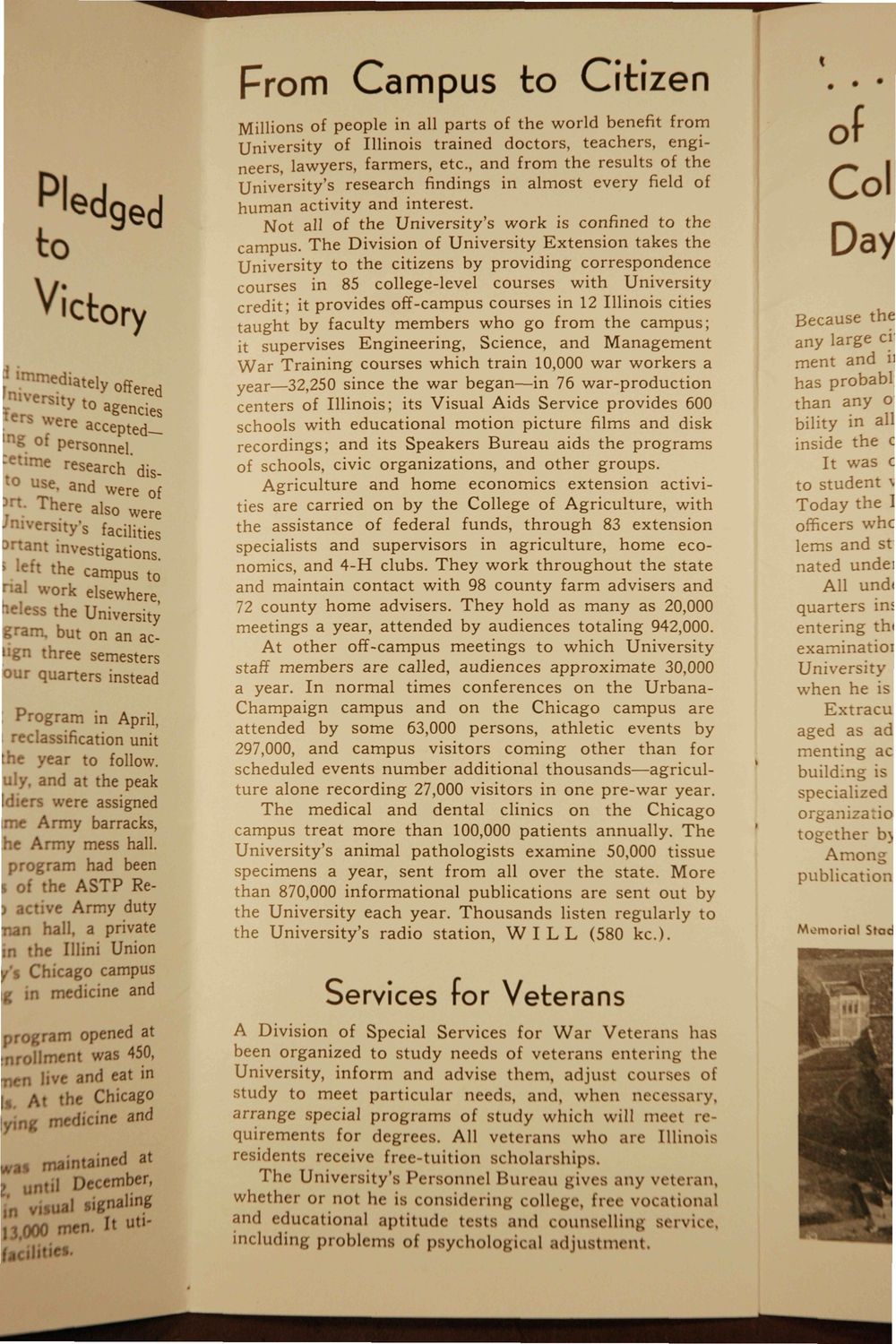| |
| |
Caption: Booklet - UI Informational Pamplet (1945)
This is a reduced-resolution page image for fast online browsing.

EXTRACTED TEXT FROM PAGE:
From Campus to Citizen Millions of people in all parts of the world benefit from University of Illinois trained doctors, teachers, engineers, lawyers, farmers, etc., and from the results of the University's research findings in almost every field of human activity and interest. Not all of the University's work is confined to the campus. The Division of University Extension takes the University to the citizens by providing correspondence courses in 85 college-level courses with University credit; it provides off-campus courses in 12 Illinois cities taught by faculty members who go from the campus; it supervises Engineering, Science, and Management War Training courses which train 10,000 war workers a year —32,250 since the war began—in 76 war-production centers of Illinois; its Visual Aids Service provides 600 schools with educational motion picture films and disk recordings; and its Speakers Bureau aids the programs of schools, civic organizations, and other groups. Agriculture and home economics extension activities are carried on by the College of Agriculture, with the assistance of federal funds, through 83 extension specialists and supervisors in agriculture, home economics, and 4-H clubs. They work throughout the state and maintain contact with 98 county farm advisers and 72 county home advisers. They hold as many as 20,000 meetings a year, attended by audiences totaling 942,000. At other off-campus meetings to which University staff members are called, audiences approximate 30,000 a year. In normal times conferences on the UrbanaChampaign campus and on the Chicago campus are attended by some 63,000 persons, athletic events by 297,000, and campus visitors coming other than for scheduled events number additional thousands—agriculture alone recording 27,000 visitors in one pre-war year. The medical and dental clinics on the Chicago campus treat more than 100,000 patients annually. The University's animal pathologists examine 50,000 tissue specimens a year, sent from all over the state. More than 870,000 informational publications are sent out by the University each year. Thousands listen regularly to the University's radio station, W I L L (580 k c ) . Pledged to Ictory M e d i a t e l y offered Crsit * to agencies wcr e acceptedPersonnel, research disu se, and were of Th e r e also were rsi ty's facilities lnv estigations. the campus to 'ork elsewhere, the University but on an acthree semesters quarters instead ram in April, ssification unit year to follow, nd at the peak were assigned irmy barracks, Army mess hall, ram had been he ASTP Rere Army duty hall, a private [he Illini Union icago campus medicine and opened at nrollment was 450, jve and eat in the Chicago medicine and maintained at ,1 December, isual signaling • Services for Veterans A Division of Special Services for W a r Veterans has been organized to study needs of veterans entering the University, inform and advise them, adjust courses of study to meet particular needs, and, when necessary, arrange special programs of study which will meet requirements for degrees. All veterans who are Illinois residents receive free-tuition scholarships. The University's Personnel Bureau gives any vet< in, whether or not lie is considering college, free vocational and educational aptitude tests and counselling service, including problems oi psychol- -u al adjustment. men. It uti-
| |